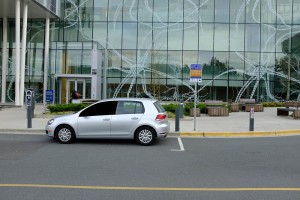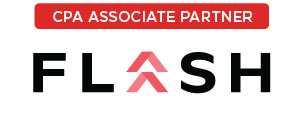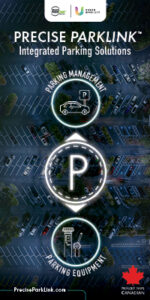Policy-makers are waking up to the fact that cyclists and pedestrians have to be protected if multi-modality is to be a success. As a result, there is a thriving market in vulnerable road user detection but technology choice is an important factor in its success. Here, Q-Free TDC’s Colin Reekie talks about initiatives currently under way in Scotland.
Vulnerable road users — the collective term for cyclists and pedestrians — present traffic engineers with especial challenges. They are small, often numerous and often to be found in traffic monitoring situations which have complex geometries and occluded lines of vision. Modern bicycle design also means they have very little metallic content, which makes the use of inductive loop technology for their detection problematic. Bicycles are also highly likely to come off second-best in a collision with a car or larger vehicle.
Globally, as governments look to reduce overall numbers of those killed and seriously injured on roads whilst also looking to reduce transport’s environmental footprint, there is increasing recognition of the need to detect and protect vulnerable road users in crowded, multimodal traffic environments. This has implications both in terms of the types of technologies used and how it is deployed.
Q-Free TDC is currently helping local authorities in Scotland to monitor how they are supporting UK Government efforts to increase numbers of cyclists and build more sustainability and fitness into personal mobility. The national goal is to have 10 per cent of traffic in the UK be cycle-based by 2020, and so there is a real need to have specific data on how and where people are cycling.
Specifically at three sites in Glasgow, Scotland’s largest city, Q-Free TDC has provided a solution which has already been in successful operation for over a year in the Danish capital, Copenhagen. This so-called ‘Copenhagen Solution’…
Municipal parking managers have the challenging task of balancing the management of a scarce resource and providing service to a wide range of customers. The mindset is a shift from the mentality of an enforcer to that of a protector.
Enforcement is the one element of parking planning and management that people generally don’t like to discuss. People resent getting parking tickets—or getting towed—and they often associate enforcement with greed on the parts of municipal parking authorities. Why else would a city penalize parkers with fines if they weren’t trying to generate additional revenues, right? (more…)
Canada is becoming a more urban country. As Cities continue to grow and prosper, more and more people are making the choice to embrace truly urban living. This lifestyle includeas a strong preference to live close to a wide range of amenities, social activities and employment opportunities that can be accessed with short travel times. It also includes choosing to live in an urban environment consisting predominantly of apartment buildings and townhouses in a mixed use setting with grade level retail, restaurant and personal service uses and nearby employment space. This approach to urban living provides convenience for residents and also generates activity for local service business owners. If the density of the mixed use environment is high, residents will be able to walk to many activities. (more…)
La version française suit le texte anglais.
The Bank of Canada unveiled and issued a commemorative bank note today at Rideau Hall to mark the historic reign of Her Majesty Queen Elizabeth II.
This limited-issue bank note is a variation of the existing $20 note in the Polymer series. It has all the same security features, making it easy to check and difficult to counterfeit. The differences are in the visual elements of the large window.
The commemorative note will circulate along with the existing $20 note, and will be available to Canadians through their financial institutions starting tomorrow.
Since this commemorative note is being issued in relatively small numbers (5 per cent of $20s in circulation), and may be retained as keepsakes by Canadians, its volume and time in circulation may well be limited.
The Bank made commemorative notes available to financial institutions and others in the cash-handling industry for testing purposes. Testing by financial institutions showed no impact on ABMs and some note accepting devices, however, certain other note accepting devices did not readily accept the commemorative note. Should this occur, another bank note can be used instead.
La Banque du Canada dévoile et émet le nouveau billet commémoratif de 20 $
La Banque du Canada a dévoilé et émis aujourd’hui, à Rideau Hall, un billet commémoratif pour souligner le règne historique de Sa Majesté la reine Elizabeth II.
Émis en nombre limité, ce billet est une variante de l’actuel billet de 20 $ en polymère. Il intègre les mêmes éléments de sécurité (ce qui facilite sa vérification et complique sa contrefaçon), à ceci près que la bande transparente présente de nouveaux éléments visuels.
Le billet commémoratif circulera en parallèle avec l’actuel billet de 20 $ et sera distribué dès demain aux Canadiennes et aux Canadiens par l’entremise des institutions financières du pays.
Étant donné qu’ils sont émis en quantité relativement faible (5 % de la totalité des billets de 20 $ en circulation) et…
By Robin Arnfield
Joe Oliver, Canada’s Finance Minister, announced on April 13 that the Code of Conduct for the Credit and Debit Card Industry in Canada, a set of rules designed to protect merchants and cardholders, has been extended to mobile payments. The move will provide regulatory certainty for Canada’s nascent mobile payments market, particularly given the prospect of Apple Pay coming to Canada this year (http://www.mobilepaymentstoday.com/news/apple-pay-poised-to-debut-in-canada/).
“It’s very early days for mobile payments at the point-of-sale in Canada, but the stakeholders such as the banks and telcos are establishing their positions,” says Christie Christelis, president of Canadian consultancy Technology Strategies International. “There’s very little mobile payments adoption in Canada, as NFC-enabled smartphones aren’t available in sufficient quantities yet. Also, consumers lack awareness about NFC payments at the point-of-sale and need to learn how to load their card credentials onto smartphones.”
However, Christelis says Canadian consumers are enthusiastic about using smartphones for purchases. “They’re already doing a lot of remote mobile payments,” he says. “Also, over the last year or two, I’ve been seeing a lot more contactless credit card payments in stores. Many Canadian POS terminals are already NFC-enabled on the back of the country’s EMV migration.”
A bottleneck to Canadian contactless card and mobile payments adoption is the fact that, while many Canadian credit cards contain contactless chips, there are still few contactless debit cards in issue. This is a problem, as Canada is a large debit card market, Christelis says.
Interac, the Canadian domestic debit scheme, only lists 13 FIs, including CIBC, RBC Royal Bank of Canada, Scotiabank and TD, as supporting its Interac Flash contactless application (http://interac.ca/en/interac-flash/flash-filist). In March 2013, RBC carried out the first Canadian mobile payment involving Interac Flash (http://www.mobilepaymentstoday.com/news/interac-and-partners-demo-canadas-first-contactless-mobile-debit-scheme/).
Code of Conduct
The Code was introduced in 2010 to promote merchant choice, fee transparency and disclosure, and fairness…
By Bill Smith
PHOTO CAPTION: Image shows car above a sensor within the stall and with the signage and meter. This is in front of the Centre for Brain Health (attached to and part of the Hospital)
Single space sensors are one of the most exciting parking technologies to be introduced in recent years. They have quickly gained acceptance throughout the industry because of the many benefits they offer both parkers and parking owners. The most obvious advantage can be found in their parking guidance function. By clearly and accurately indicating where open parking can be found, the sensor technology makes parking more convenient than ever before by eliminating the need for parkers to circle structures and lots looking for an open space. At the same time, the sensors collect data about who is parking in each space and for how long. This is invaluable information for helping owners and operators run their facilities as efficiently as possible.
The University of British Columbia (UBC) in Vancouver has found a new, non-traditional use for this technology. The University recently installed sensors in two areas on campus that have historically had trouble with drivers overstaying permitted parking durations. The areas are intended as drop-off points, but drivers tended to park for extended periods of time, which caused traffic congestion on nearby roadways. The sensors were installed to clearly indicate how long parking was permitted in each space, and encourage compliance with time limits.
UBC’s sensor program utilizes solar-powered Frogparking sensors, which are installed in the ground in each individual space and connected to the university’s parking management grid to provide real-time enforcement and utilization data. Nine sensors were installed at the UBC Hospital Complex and eleven were installed at the recreation center and aquatic centre.
“We began this program last August, and we are already seeing an…
By David Watts
If you drive past the Parking garage at the Ajax GO station, or the Erindale GO station, there is nothing visible that sets them apart from the other dozen or so parking facilities Metrolinx has constructed over the past 2 years.
You must get to the top floor to see the difference – approximately 1,200 solar modules on each of the those roofs, and a purpose built inverter room, designed specifically for the unit that converts the direct current generated by solar modules to the alternating current that powers our houses.
Each garage will generate approximately 342,000 kWH per year, which is the equivalent consumption of 32 or 33 average Ontario homes.
It can also be looked at as offsetting the consumption of the parking facility.
Consumption projections at Erindale showed projected electrical consumption of about 1,000,000 kWH per year. The solar on the roof covers about a third of the annual needs, but if you break it down by season, it covers the summer consumption almost entirely. Winter is another story- the days are shorter and cloudier, and the nights long.
Long term analysis will show us if actual consumption reaches the projected levels, as all the lighting is LED, and lights are on timers and photo-sensors.
How do you plan a solar garage?
It is actually quite simple.
The racking system which connects the solar modules to the building is an engineered, ballasted system. Wind tunnel testing shows us just where we need to place the weight to ensure that the entire array stays put, no matter what nature throws at us.
Typically the universal load for this ranges from 3 PSF to 6 PSF. If the parking facility in the design stage has a top floor that has a minimum extra 7 PSF allowance designed into it, I would call that solar ready….
By Darnel Harris
On January 30, 2013 Richard Florida, the creative class guru published a piece on his CityLab blog entitled, ‘More Losers than Winners in America’s New Economic Geography.’ Effectively distancing himself from the way the theory he popularized for a decade has been implemented, Florida wrote that, “on close inspection, talent clustering provides little in the way of trickle-down benefits. Its benefits flow disproportionately to more highly-skilled knowledge, professional and creative workers whose higher wages and salaries are more than sufficient to cover more expensive housing in these locations. While less-skilled service and blue-collar workers also earn more money in knowledge-based metros, those gains disappear once their higher housing costs are taken into account.” In effect, the ‘creative class’ attracting investments municipalities made were now exacerbating urban inequality, and, were not just, “a vicious cycle but an unsustainable one — economically, politically, and morally.” While Florida has expressed his regret, families continue to swell the ranks of that vicious cycle in North America’s major cities.









